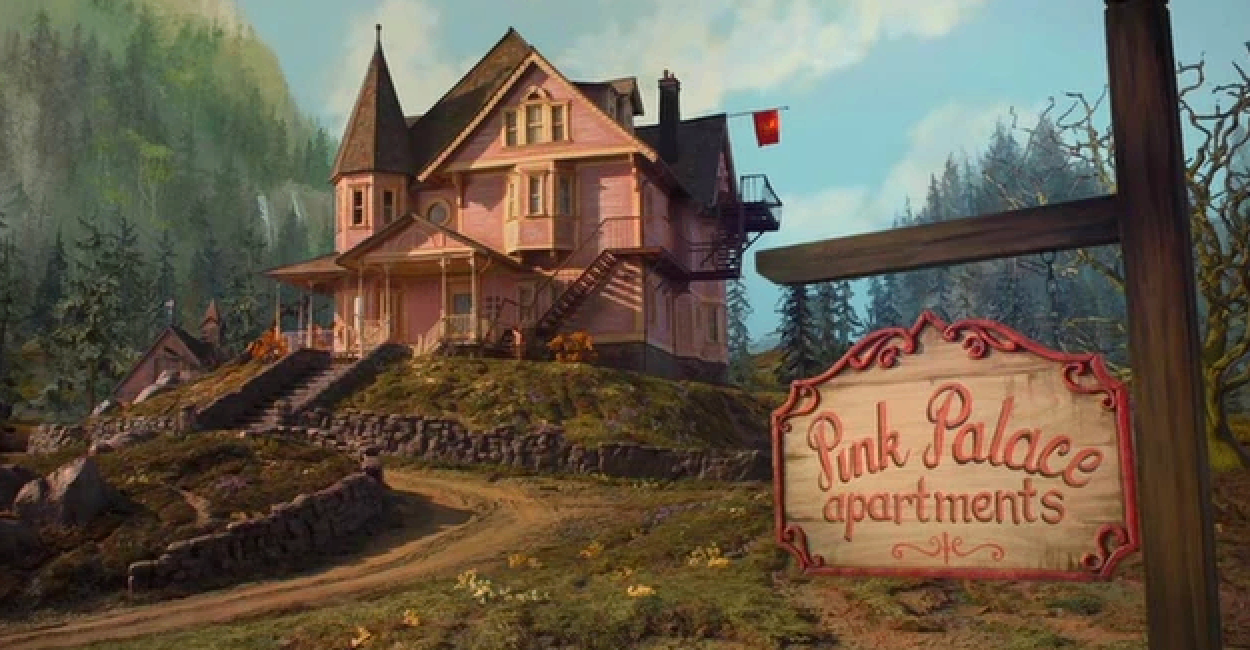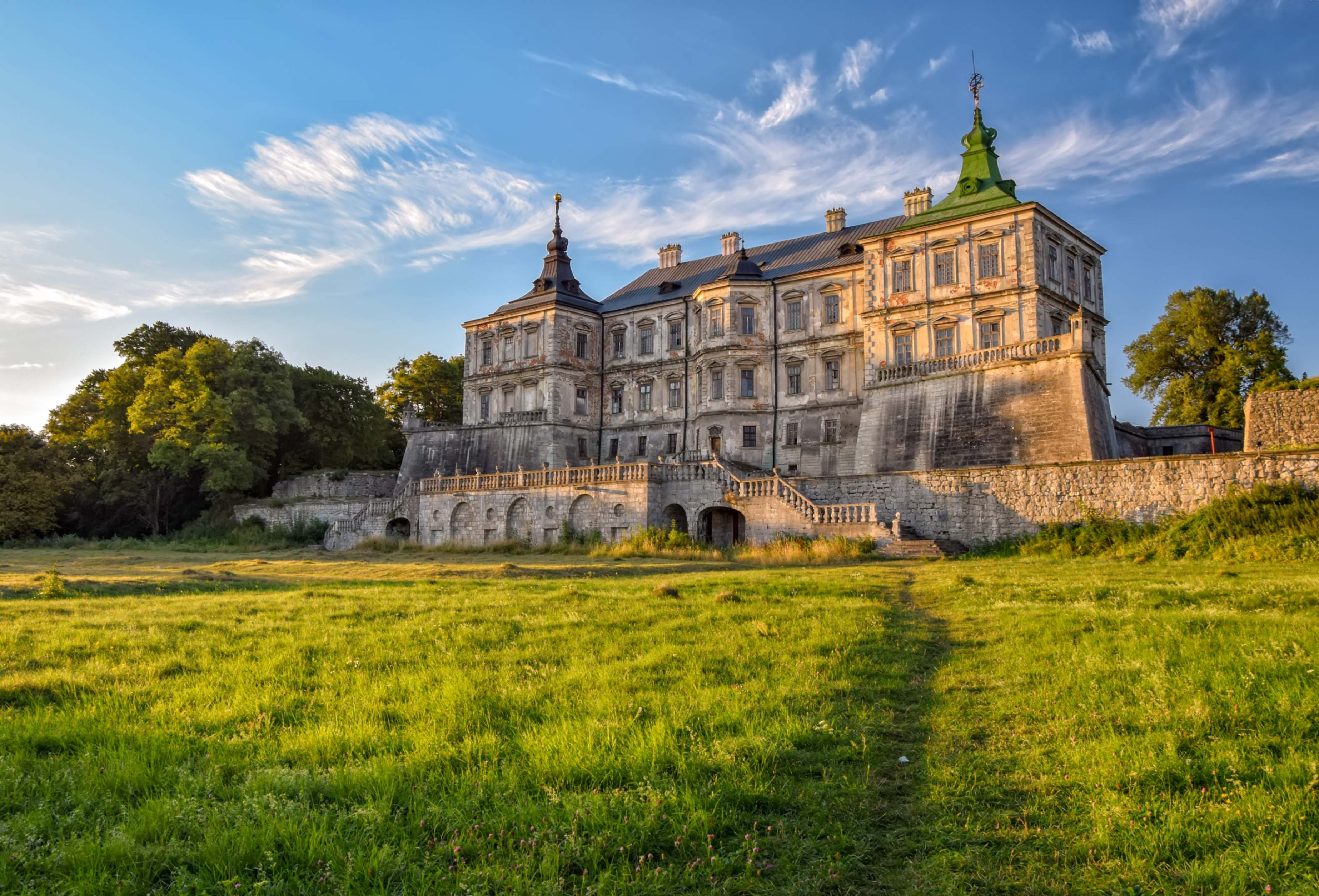Introduction
The eerie, faded grandeur of the Pink Palace apartments in the movie Coraline has captured the imaginations of fans for years. Its tilting structure, peeling paint, and mysterious exterior make it as much a character as Coraline herself. Have you ever wondered if this spooky, intriguing house is a real place? The truth behind the Pink Palace is a fascinating mix of creative fiction and real-world architectural inspiration. While the Pink Palace itself is not a real, physical location you can visit, its design draws from various historic houses and apartments, giving it a sense of realism that makes it feel almost tangible to viewers. Let's explore the origins of Coraline's iconic home.
Exploring the Origins and Real-Life Inspiration of Coraline’s House
While you can't book a trip to the actual Pink Palace apartments, its design isn't purely from imagination. The house is a fictional creation, but its roots are in real architectural styles. The film's creators, including concept artist Tadahiro Uesugi, drew from various sources to design its unique exterior. Since the Pink Palace is not based on a specific, physical location, there isn't a real-life house that fans can explore inside. However, fans have speculated about real homes that resemble the Pink Palace, and many visit lookalike Victorian houses to get a sense of what exploring inside might feel like, though these are not officially tied to Coraline.
One potential real-life counterpart mentioned in fan communities is a pink palace located in St. James Court, Louisville. This building was also converted into apartments, sharing a similar history with the fictional residence. This blend of real and imagined details is what makes Coraline's house feel so hauntingly familiar.
The Pink Palace: Fiction vs. Reality

In the movie, the Pink Palace is a 150-year-old Queen Anne-style mansion in Ashland, Oregon. It was renovated into an apartment complex with three units occupied by the Jones family, Miss Spink and Miss Forcible, and Mr. Bobinsky. Its drab, weathered exterior hides the magical and dangerous "Other World." This specific house, with its unique layout and history, exists only in the world of Coraline.
The line between fiction and reality blurs when you look at its inspirations. For example, the real-life pink building in Louisville, sometimes cited as an influence, was also turned into apartments in the 1970s. This shared history of a grand house being divided for multiple residents helps ground the fictional Pink Palace in a believable context.
So, while you can't visit the exact Pink Palace from the film, its architectural spirit is very real. The key features—the Victorian style, the conversion to apartments, and the distinct pink color—can be found in actual buildings, making the search for real-life lookalikes an exciting adventure for fans.
Is the Coraline House Real Life? Locations and Architectural Influences
The Coraline house you see on screen is not a real-life location but a masterful creation for the film. The book and movie even place the Pink Palace apartments in different locations, each with slightly different details. The design is heavily influenced by the Queen Anne architectural style, known for its asymmetry, detailed trim, and large porches, all of which are visible on the exterior of the Pink Palace. While the Pink Palace features a hidden door leading to a mysterious room in the movie, there is no confirmed real-life house with an identical hidden room like the one in Coraline; that detail was added as part of the fictional story.
Concept artist Tadahiro Uesugi was instrumental in developing the house's iconic look. His designs gave the Pink Palace its memorable silhouette and personality. In the history of the Pink Palace house as featured in Coraline, the building was originally constructed as a grand Victorian mansion that was later divided into several apartments, as seen both in Neil Gaiman's book and the film adaptation. In the story, this history is important because it allows Coraline to interact with a variety of eccentric neighbors, each living in different parts of the house. Here is a quick comparison between the house in the book and the movie.
- Feature: Movie Version / Book VersionLocation: Ashland, Oregon, USA / An unknown location in EnglandApartments: Three occupied apartments / Four apartments (one is empty)Famous Door: A small, bricked-up door / A large, old oak doorWhile the Pink Palace as shown in Coraline is not a real, existing house, its movie version was inspired by houses in Ashland, Oregon, but it was ultimately created as a detailed stop-motion set. There is no actual Pink Palace identical to the film or book still standing in real life, though fans often search for similar architecture in Ashland or imagine its existence based on the story's descriptions.
- Location: Ashland, Oregon, USA / An unknown location in England
- Apartments: Three occupied apartments / Four apartments (one is empty)
- Famous Door: A small, bricked-up door / A large, old oak door
These differences highlight how the house was adapted for the screen, becoming the unforgettable setting we know today.
Real Abandoned Houses That Resemble the Pink Palace

Are you searching for a real-life house that gives you Coraline vibes? You're in luck. While the exact Pink Palace is fictional, urban explorers and photographers have found many abandoned houses with a similar eerie charm. Social media platforms are filled with images of decaying Victorian mansions that look like they could hide a secret door.
The fascination with these places comes from their haunting beauty and the mysterious stories they hold. An abandoned pink Victorian mansion in upstate New York, for example, has drawn many comparisons to the Pink Palace apartments due to its color and architectural style. Its weathered exterior and forgotten history are a perfect match for the film's aesthetic.
Here are some examples of real places that capture the spirit of the Pink Palace:
- Abandoned Victorian mansions in upstate New York.
- Pidhirtsi Castle in Ukraine, known as a grand, haunted palace.
- Historic homes with faded pink paint, like the "Pink Palace" in Dhaka, Bangladesh.
These locations prove that while Coraline's house isn't real, its spooky and beautiful essence can be found all over the world.
Conclusion
In conclusion, the captivating allure of Coraline's house, the Pink Palace, goes beyond its fictional roots. With real-life inspirations and architectural influences, it weaves a rich tapestry of imagination and reality that intrigues both fans and explorers. From examining the contrasts between the whimsical charm of the animated world and the authentic structures that inspire them, it's clear that the essence of Coraline's home resonates with many. Whether you're drawn in by the fantastical elements or the eerie beauty of abandoned houses that echo its design, there's much to discover. If you're eager to dive deeper into this enchanting world, don’t hesitate to reach out for more information or guidance!
Frequently Asked Questions
Can you visit a real Coraline house or Pink Palace in real life?
No, you cannot visit the Pink Palace from the movie because it is a fictional setting created for the film. However, you can find and visit real-life Victorian houses with a similar architectural style and pink exterior that evoke the same feeling as Coraline's iconic home.
Are there photos or videos online of the real-life Coraline house?
Since the Pink Palace isn't real, no official photos of it exist. What you can find online are countless photos and videos from explorers and fans who have discovered real abandoned houses that strongly resemble the Pink Palace apartments, sharing their finds on social media and blogs.
Does the real Pink Palace from Coraline still exist today?
The Pink Palace featured in Coraline never truly existed as a real building; it was a miniature set constructed for the stop-motion animation. Therefore, it does not exist today. The architectural inspirations for its design, however, are real and can still be seen in various historic buildings.

.png)



